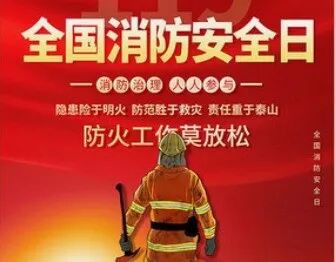
Comprehensive Analysis of 51 Essential Standards for Fire Safety Equipment Inspection
Fire safety equipment inspection is a core aspect of ensuring building fire safety, and mastery of standards is the foundation of inspection work. This article systematically organizes the 51 national standards and industry regulations related to fire safety equipment inspection, providing authoritative references for practitioners by combining application scenarios, updates, and technical points.
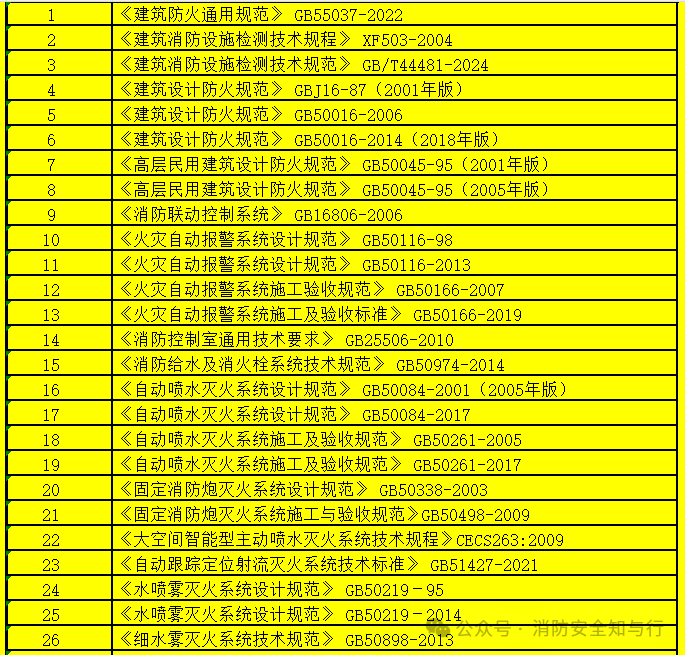
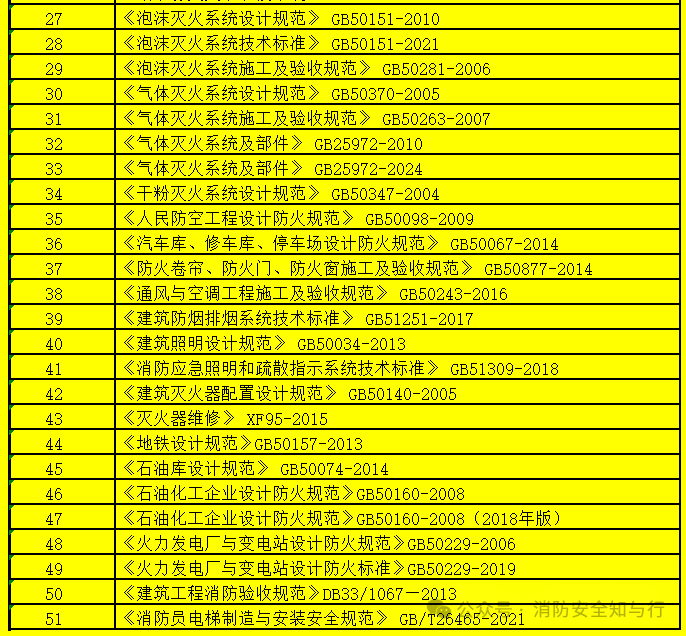
1. Basic Framework Standards
General Code for Building Fire Protection GB55037-2022 As a new regulation implemented in 2023, GB55037 integrates the general requirements for building fire protection, covering core contents such as the principles of fire safety equipment installation, smoke control systems, and automatic fire alarm systems. This is the guiding document for current fire protection design. Its highlights include:
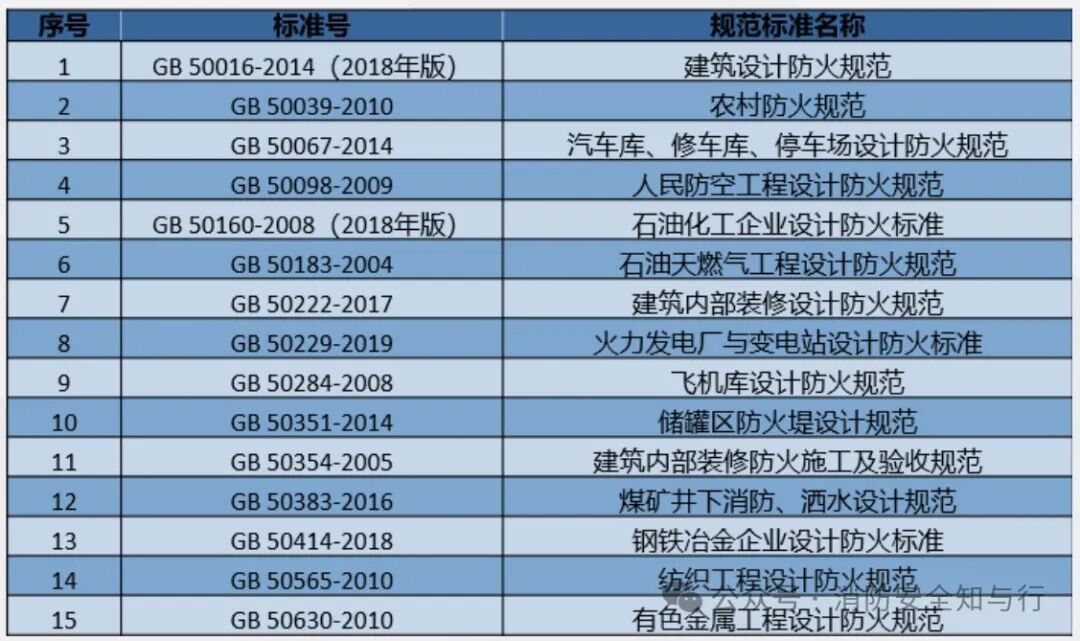
Clearly defines the functional objectives and safety baseline of fire safety equipment (e.g., coverage of fire water supply systems, alarm system linkage logic);
Replaces conflicting clauses in some old standards, such as the connection with GB50016-2014.
Building Design Fire Protection Code GB50016-2014 (2018 Edition) GB50016-2014 is the core standard for building fire protection design, integrating the original Building Code GB50016-2006 and High-Rise Code GB50045-95 (2005 Edition), applicable to all types of new, renovated, and expanded buildings. Key chapters include:
Fire Lane and Rescue Site (Sections 7.1-7.3);
Scope of Automatic Fire Extinguishing System Installation (Section 8.3);
Configuration of Smoke Control and Exhaust Facilities (Section 8.5).
Design Fire Protection Code for High-Rise Civil Buildings GB50045-95 (2005 Edition) Note: This standard was abolished in 2015, but some historical projects still use its clauses.
2. Specialized Standards for Fire Safety Equipment
(1) Fire Extinguishing Systems
Design Code for Automatic Sprinkler Systems
GB50084-2017 (replaces the 2005 edition);
Construction Acceptance
GB50261-2017 (replaces the 2005 edition). Key points: The 2017 edition adds design parameters for pre-action systems and cooling protection systems, which need to be verified for water quantity, nozzle response time, and linkage control during inspection.
Gas Fire Extinguishing Systems
Design Code
GB50370-2005;
Construction Acceptance
GB50263-2007;
Component Standards
GB25972-2024 (replaces the 2010 edition). Note: GB25972-2024 strengthens the testing requirements for valve components regarding corrosion resistance and sealing.
Foam Fire Extinguishing Systems
Technical Standards
GB50151-2021 (replaces the 2010 edition);
Construction Acceptance
GB50281-2006. Update: The 2021 edition adds restrictions on the applicable scenarios for resistant foam solutions.
(2) Fire Alarm and Linkage Systems
Automatic Fire Alarm Systems
Design Code
: GB50116-2013 (replaces the 1998 edition);
Construction Acceptance
: GB50166-2019 (replaces the 2007 edition). Inspection focus: detector sensitivity testing, controller and fire equipment linkage logic (e.g., priority of fire curtain descent).
Fire Linkage Control Systems
GB16806-2006 specifies the performance requirements for fire emergency broadcasting, fire telephones, and other equipment, which need to be verified in conjunction with GB50116-2013 for linkage delay parameters.
(3) Smoke Control and Exhaust Systems
Technical Standards for Building Smoke Control and Exhaust Systems GB51251-2017
This standard first unifies the design, construction, and acceptance requirements for smoke control and exhaust systems, clarifying:
Calculation methods for natural smoke exhaust opening areas;
Verification standards for mechanical smoke exhaust system air volume;
Installation height and fire resistance limit of smoke barriers.
(4) Emergency Lighting and Evacuation
Technical Standards for Fire Emergency Lighting and Evacuation Indication Systems GB51309-2018
Mandatory requirement to adopt centralized control systems; clarifies the continuous power supply time for lighting (e.g., high-rise buildings ≥90 minutes).
3. Standards for Special Places and Equipment
Design Fire Protection Code for Automobile Garages, Repair Garages, and Parking Lots GB50067-2014 Addresses the characteristics of vehicle fires, stipulating the coverage of foam-water sprinkler systems and the activation conditions for mechanical smoke exhaust.
Design Fire Protection Code for Petrochemical Enterprises GB50160-2008 (2018 Edition) The revised edition adds testing requirements for the emergency cooling systems of liquefied hydrocarbon storage tanks.
Safety Standards for Manufacturing and Installation of Firefighter Elevators GB/T26465-2021 Emphasizes the testing of elevators’ waterproof performance and emergency descent function, which need to be verified in conjunction with the fire alarm system.
4. Updates and Key Points for Implementation of Standards
Dynamic Monitoring of Abolished Standards
For example, the Design Fire Protection Code for High-Rise Civil Buildings GB50045-95 has been abolished, and relevant clauses have been absorbed by GB50016-2014;
The 2005 edition of the Design Code for Automatic Sprinkler Systems is invalid, and the 2017 edition should be followed.
Specificity of Local Standards
For instance, Zhejiang Province’s Fire Acceptance Standards for Construction Projects DB33/1067—2013 has additional requirements for fire separation in commercial complexes.
Principles for Citing Standards in Inspection Reports
Prioritize citing the latest version;
Historical projects must indicate the timeliness of the cited standards.
5. Conclusion
The 51 standards for fire safety equipment inspection form a tight technical network. Practitioners must use GB55037-2022 and GB50016-2014 as guidelines, combined with specialized system standards and local requirements, to strictly control the entire process of design, construction, and acceptance. Special attention should be paid to the compliance risks during the transition period between old and new standards, regularly checking the latest announcements from the Ministry of Housing and Urban-Rural Development and the Ministry of Emergency Management to ensure the authority and legality of inspection conclusions.
Source: Qi Cheng Says
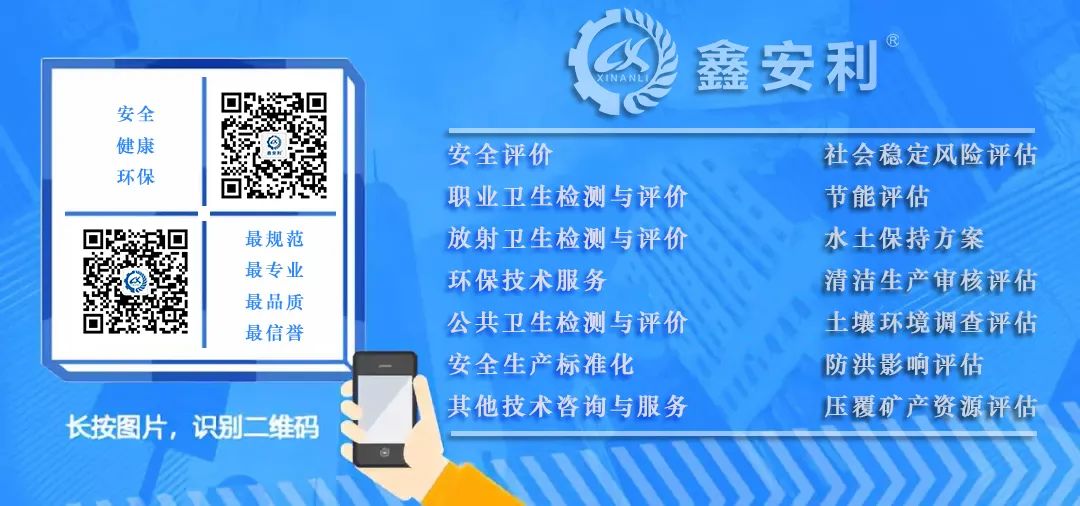
Disclaimer:
This platform maintains neutrality regarding reprints, sharing, statements, and viewpoints, aiming only to convey more information and does not represent the platform’s endorsement of their viewpoints or responsibility for their authenticity. If any political, factual, technical errors, or copyright issues are found, please contact us promptly: 0371-65950206. Thank you for your understanding and support!
Follow the public account below for more related knowledge:

Insurance Transfer Convenience
(Insurance product distribution and insurance industry knowledge learning)